- Goal A Goal A 모든 생태계의 무결성, 연결성 및 복원력을 유지, 강화 또는 복원하여 2050년까지 자연 생태계의 면적을 크게 늘릴 수 있습니다. 인간에 의한 멸종 위기 종의 멸종을 막고, 2050년까지 모든 종의 멸종률과 위험을 10배 줄이고, 토종 야생 종의 풍부함을 건강하고 회복력 있는 수준으로 높입니다. 야생 및 가축화된 종의 개체군 내 유전적 다양성을 유지하여 적응 잠재력을 보호합니다. The integrity, connectivity and resilience of all ecosystems are maintained,enhanced, or restored, substantially increasing the area of natural ecosystems by 2050; Human induced extinction of known threatened species is halted, and, by2050, extinction rate and risk of all species are reduced tenfold, and the abundance of native wild species is increased to healthy and resilient levels; The genetic diversity within populations of wild and domesticated species,is maintained, safeguarding their adaptive potential.
- Goal B Goal B 생물다양성을 지속 가능하게 이용 및 관리하고 생태계 기능과 서비스를 포함한 자연의 인간에 대한 기여를 가치 있게 평가, 유지 및 강화하며, 현재 감소하고 있는 생물다양성을 복원하여 2050년까지 현재와 미래 세대의 이익을 위해 지속 가능한 개발을 달성할 수 있도록 지원합니다. Biodiversity is sustainably used and managed and nature’s contributions to people, including ecosystem functions and services, are valued, maintained and enhanced, with those currently in decline being restored, supporting the achievement of sustainable development, for the benefit of present and future generations by 2050.
- Target 1 Target 1 모든 지역에 참여형 통합 생물다양성 공간 계획 및/또는 토지 및 해양 이용 변화를 다루는 효과적인 관리 프로세스를 적용하여 생태적 완전성이 높은 생태계를 포함하여 생물다양성의 중요성이 높은 지역의 손실을 2030년까지 제로에 가깝게 줄이고 원주민과 지역사회의 권리를 존중해야 합니다. Ensure that all areas are under participatory integrated biodiversity inclusive spatial planning and/or effective management processes addressing land and sea use change, to bring the loss of areas of high biodiversity importance, including ecosystems of high ecological integrity, close to zero by 2030, while respecting the rights of indigenous peoples and local communities.
- Target 3 Target 3 2030년까지 육상, 내륙, 연안 및 해양 지역, 특히 생물다양성과 생태계 기능 및 서비스에 특히 중요한 지역의 최소 30%가 생태적으로 대표되고 잘 연결되며 공평하게 관리되는 보호 지역 시스템과 기타 효과적인 지역 기반 보존 조치를 통해 효과적으로 보존 및 관리될 수 있도록 보장하고 활성화합니다. 해당되는 경우 토착민 및 전통 영토를 인정하고 더 넓은 경관, 해양 및 바다에 통합하는 한편, 해당 지역에서 적절한 경우 지속 가능한 사용이 보전 결과와 완전히 일치하도록 보장하며, 토착민과 지역 사회의 권리를 인정하고 존중합니다. Ensure and enable that by 2030 at least 30 per cent of terrestrial, inland water,and of coastal and marine areas, especially areas of particular importance for biodiversity and ecosystem functions and services, are effectively conserved and managed through ecologically representative, well-connected and equitably governed systems of protected areas and other effective area-based conservation measures, recognizing indigenous and traditional territories, where applicable,and integrated into wider landscapes, seascapes and the ocean, while ensuring that any sustainable use, where appropriate in such areas, is fully consistent with conservation outcomes, recognizing and respecting the rights of indigenous peoples and local communities including over their traditional territories.
- Target 4 Target 4 알려진 멸종위기종의 인간에 의한 멸종을 막고, 특히 멸종위기종의 회복과 보존을 위해 긴급한 관리 조치를 취하여 멸종 위험을 크게 줄이고, 토종, 야생 및 가축화된 종의 개체군 내 및 개체군 간의 유전적 다양성을 유지 및 복원하여 현장 및 현장 외 보존과 지속 가능한 관리 관행을 통해 적응 가능성을 유지하고, 인간과 야생동물의 상호작용을 효과적으로 관리하여 공존을 위한 인간-야생동물 갈등을 최소화합니다. Ensure urgent management actions, to halt human induced extinction of known threatened species and for the recovery and conservation of species, in particular threatened species, to significantly reduce extinction risk, as well as to maintain and restore the genetic diversity within and between populations of native, wild and domesticated species to maintain their adaptive potential, including through in situ and ex situ conservation and sustainable management practices, and effectively manage human-wildlife interactions to minimize human-wildlife conflict for coexistence.
- Target 8 Target 8 기후 변화와 해양 산성화가 생물 다양성에 미치는 영향을 최소화하고 자연 기반 해결책 및/또는 생태계 기반 접근법을 포함한 완화, 적응 및 재해 위험 감소 조치를 통해 생물 다양성의 회복력을 높이는 동시에 기후 행동이 생물 다양성에 미치는 부정적인 영향을 최소화하고 긍정적인 영향을 촉진합니다. Minimize the impact of climate change and ocean acidification on biodiversity and increase its resilience through mitigation, adaptation, and disaster risk reduction actions, including through nature-based solution and/or ecosystem-based approaches, while minimizing negative and fostering positive impacts of climate action on biodiversity.
- Target 6 Target 6외래종의 유입 경로를 파악 및 관리하고, 우선순위 침입 외래종의 유입 및 정착을 방지하고, 다른 알려진 또는 잠재적 침입 외래종의 유입 및 정착률을 2030년까지 50% 이상 줄이고, 특히 섬과 같은 우선순위 지역에서 침입 외래종을 박멸 또는 통제함으로써 침입 외래종이 생물다양성 및 생태계 서비스에 미치는 영향을 제거, 최소화, 감소 또는 완화한다.
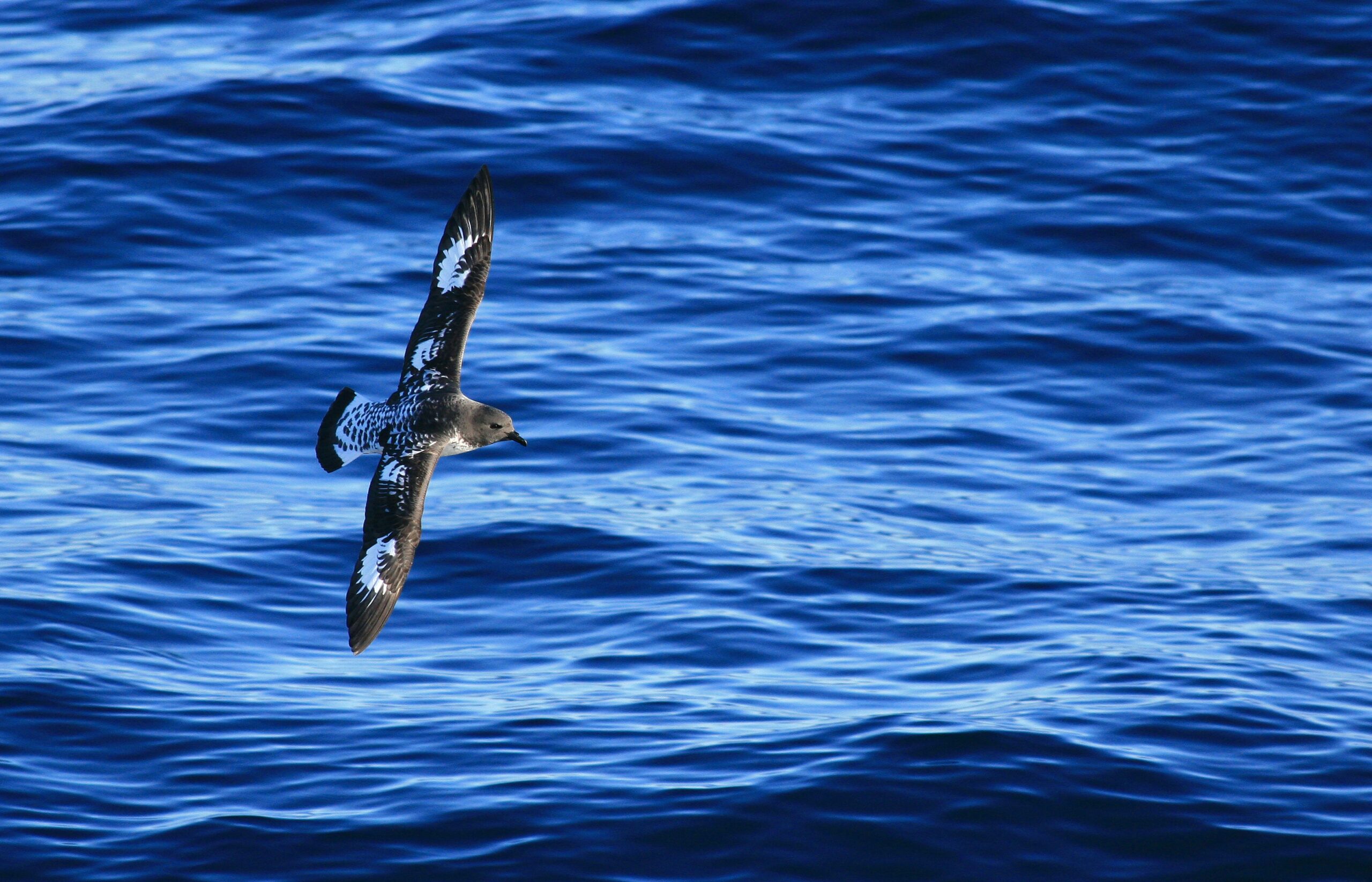
- Goal A Goal A 모든 생태계의 무결성, 연결성 및 복원력을 유지, 강화 또는 복원하여 2050년까지 자연 생태계의 면적을 크게 늘릴 수 있습니다. 인간에 의한 멸종 위기 종의 멸종을 막고, 2050년까지 모든 종의 멸종률과 위험을 10배 줄이고, 토종 야생 종의 풍부함을 건강하고 회복력 있는 수준으로 높입니다. 야생 및 가축화된 종의 개체군 내 유전적 다양성을 유지하여 적응 잠재력을 보호합니다. The integrity, connectivity and resilience of all ecosystems are maintained,enhanced, or restored, substantially increasing the area of natural ecosystems by 2050; Human induced extinction of known threatened species is halted, and, by2050, extinction rate and risk of all species are reduced tenfold, and the abundance of native wild species is increased to healthy and resilient levels; The genetic diversity within populations of wild and domesticated species,is maintained, safeguarding their adaptive potential.
- Goal B Goal B 생물다양성을 지속 가능하게 이용 및 관리하고 생태계 기능과 서비스를 포함한 자연의 인간에 대한 기여를 가치 있게 평가, 유지 및 강화하며, 현재 감소하고 있는 생물다양성을 복원하여 2050년까지 현재와 미래 세대의 이익을 위해 지속 가능한 개발을 달성할 수 있도록 지원합니다. Biodiversity is sustainably used and managed and nature’s contributions to people, including ecosystem functions and services, are valued, maintained and enhanced, with those currently in decline being restored, supporting the achievement of sustainable development, for the benefit of present and future generations by 2050.
- Target 1 Target 1 모든 지역에 참여형 통합 생물다양성 공간 계획 및/또는 토지 및 해양 이용 변화를 다루는 효과적인 관리 프로세스를 적용하여 생태적 완전성이 높은 생태계를 포함하여 생물다양성의 중요성이 높은 지역의 손실을 2030년까지 제로에 가깝게 줄이고 원주민과 지역사회의 권리를 존중해야 합니다. Ensure that all areas are under participatory integrated biodiversity inclusive spatial planning and/or effective management processes addressing land and sea use change, to bring the loss of areas of high biodiversity importance, including ecosystems of high ecological integrity, close to zero by 2030, while respecting the rights of indigenous peoples and local communities.
- Target 3 Target 3 2030년까지 육상, 내륙, 연안 및 해양 지역, 특히 생물다양성과 생태계 기능 및 서비스에 특히 중요한 지역의 최소 30%가 생태적으로 대표되고 잘 연결되며 공평하게 관리되는 보호 지역 시스템과 기타 효과적인 지역 기반 보존 조치를 통해 효과적으로 보존 및 관리될 수 있도록 보장하고 활성화합니다. 해당되는 경우 토착민 및 전통 영토를 인정하고 더 넓은 경관, 해양 및 바다에 통합하는 한편, 해당 지역에서 적절한 경우 지속 가능한 사용이 보전 결과와 완전히 일치하도록 보장하며, 토착민과 지역 사회의 권리를 인정하고 존중합니다. Ensure and enable that by 2030 at least 30 per cent of terrestrial, inland water,and of coastal and marine areas, especially areas of particular importance for biodiversity and ecosystem functions and services, are effectively conserved and managed through ecologically representative, well-connected and equitably governed systems of protected areas and other effective area-based conservation measures, recognizing indigenous and traditional territories, where applicable,and integrated into wider landscapes, seascapes and the ocean, while ensuring that any sustainable use, where appropriate in such areas, is fully consistent with conservation outcomes, recognizing and respecting the rights of indigenous peoples and local communities including over their traditional territories.
- Target 4 Target 4 알려진 멸종위기종의 인간에 의한 멸종을 막고, 특히 멸종위기종의 회복과 보존을 위해 긴급한 관리 조치를 취하여 멸종 위험을 크게 줄이고, 토종, 야생 및 가축화된 종의 개체군 내 및 개체군 간의 유전적 다양성을 유지 및 복원하여 현장 및 현장 외 보존과 지속 가능한 관리 관행을 통해 적응 가능성을 유지하고, 인간과 야생동물의 상호작용을 효과적으로 관리하여 공존을 위한 인간-야생동물 갈등을 최소화합니다. Ensure urgent management actions, to halt human induced extinction of known threatened species and for the recovery and conservation of species, in particular threatened species, to significantly reduce extinction risk, as well as to maintain and restore the genetic diversity within and between populations of native, wild and domesticated species to maintain their adaptive potential, including through in situ and ex situ conservation and sustainable management practices, and effectively manage human-wildlife interactions to minimize human-wildlife conflict for coexistence.
- Target 8 Target 8 기후 변화와 해양 산성화가 생물 다양성에 미치는 영향을 최소화하고 자연 기반 해결책 및/또는 생태계 기반 접근법을 포함한 완화, 적응 및 재해 위험 감소 조치를 통해 생물 다양성의 회복력을 높이는 동시에 기후 행동이 생물 다양성에 미치는 부정적인 영향을 최소화하고 긍정적인 영향을 촉진합니다. Minimize the impact of climate change and ocean acidification on biodiversity and increase its resilience through mitigation, adaptation, and disaster risk reduction actions, including through nature-based solution and/or ecosystem-based approaches, while minimizing negative and fostering positive impacts of climate action on biodiversity.
- Target 6 Target 6외래종의 유입 경로를 파악 및 관리하고, 우선순위 침입 외래종의 유입 및 정착을 방지하고, 다른 알려진 또는 잠재적 침입 외래종의 유입 및 정착률을 2030년까지 50% 이상 줄이고, 특히 섬과 같은 우선순위 지역에서 침입 외래종을 박멸 또는 통제함으로써 침입 외래종이 생물다양성 및 생태계 서비스에 미치는 영향을 제거, 최소화, 감소 또는 완화한다.
생태계의 지표인 바다제비의 서식지를 복원하고 연구하는 활동은 생물다양성 보전에 기여합니다. 바다제비의 천적인 쇠무릎을 제거하여 생물다양성 ESG 프로젝트를 실천해 보세요.
지역 ㅣ 전남 신안 칠발도
바다제비 서식지 복원 및 연구 사업이란?
우리나라를 방문하는 철새 바다제비의 서식지를 복원하고 연구하는 활동은 생물다양성 증진에 도움이 됩니다. 쇠무릎을 제거하고, 바다제비의 먹이인 밀사초를 이식하는 활동은 천연기념물 322호인 신안 칠발도를 보호하는 지역상생의 성격을 가지고 있기도 하죠.
땡스카본은 바다제비 서식지 복원 및 연구 사업 활동을 통해 기업과 지자체의 생물다양성 복원 과제를 함께합니다. 생물다양성을 보전하는 기업 ESG/CSR 활동을 찾고 있다면, 아래의 바다제비 서식지 복원 및 연구 프로젝트를 확인해 보세요.
*해당 사업은 슴새, 바다새오리 등 기타 해안가에 서식하는 조류에도 적용할 수 있습니다.
사업 활동
1. 쇠무릎 제거 및 서식지 복원
- 쇠무릎에 의한 바다제비 피해 전수 조사
- 쇠무릎 제거
- 밀사초 식재 지역 복원
2. 가락지(칩) 부착 및 데이터 수집
- 가락지(위치추적기) 부착을 통한 바다제비 연구
3. 바다제비 추적 모니터링
- 무인 센서 카메라 트래핑 등을 통한 이동성 조류 모니터링
사업 평가
*ESG/CSR Assessment 성과는 개별 프로젝트마다 다를 수 있습니다.
ESG 임팩트
UN 지속가능발전목표
15 육상 생태계, 17 SDGs를 위한 파트너십
TNFD 프레임워크
- 바다제비 서식지 복원 및 연구 프로젝트는 생태계 건강의 지표인 철새, 그중에서도 바다제비를 보호하고 서식지를 복원함으로써 TNFD GOAL A 기준을 충족합니다.
- 바다제비 서식지 복원 및 연구 프로젝트는 개체 수가 감소하는 바다제비를 연구하고 보호합니다. 또한 자연이 인간에게 기여하는 바를 가치 있게 평가, 유지 및 강화하여 TNFD GOAL B의 기준을 충족합니다.
- 신안 칠발도에 멸종위기종인 바다제비의 서식지를 보존하기 위해 외래종인 쇠무릎을 제거하고, 지역 주민들과 함께 할 수 있는 참여형 통합 생물다양성 공간을 구축합니다. 본 자연기반해법은 Target 1, 3, 4, 6, 8을 충족합니다.
한국형 녹색분류체계 (K-TAXONOMY)
제 1절 녹색부문
6.생물다양성 가.생물다양성 (1)육상 및 해양생태계 보호복원 (4)생물종보호보전
고객사례
실제 기업 담당자들의 후기를 확인해 보세요!
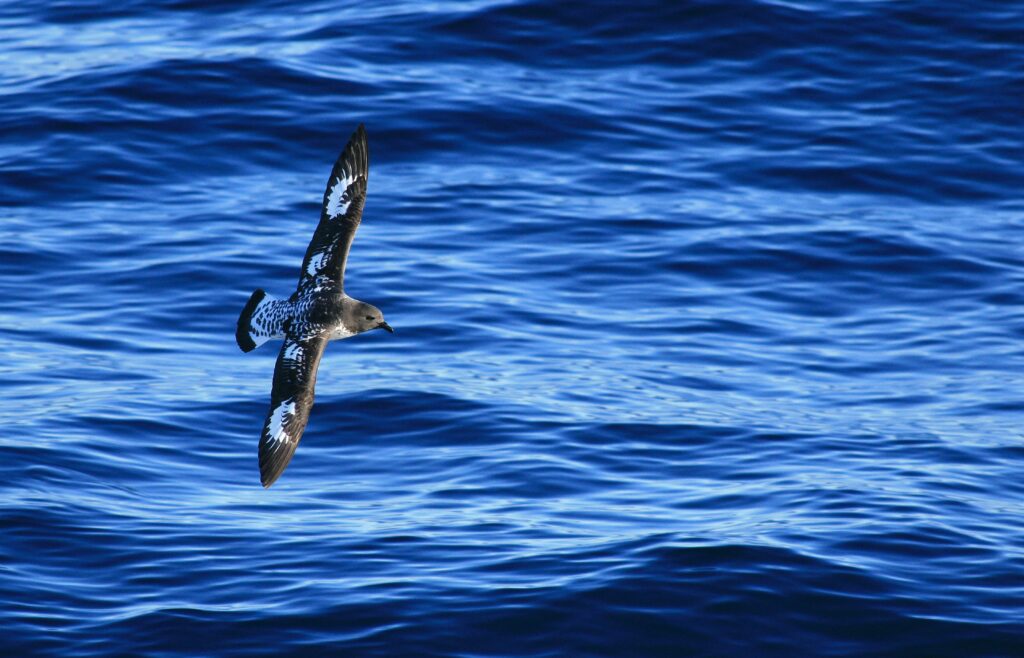


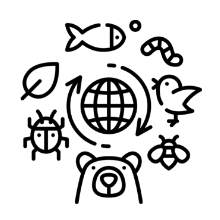 Biodiversity
Biodiversity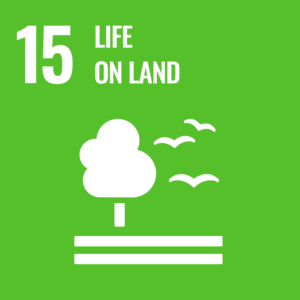
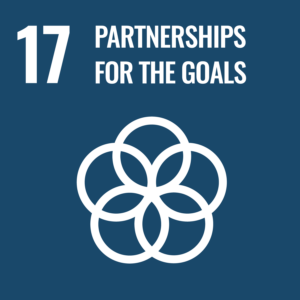
1. 지속가능발전목표 달성을 위한 데이터베이스 구축
바다제비 위험요인 파악 및 해결방안 기초자료 확보
2. 생물다양성 복원 및 증진
철새들의 안전한 중간 기착지 환경 조성으로 개체 수 보존 및 증진
3. 환경영향 최소화
생태계 복원을 통한 지속가능한 발전 도모